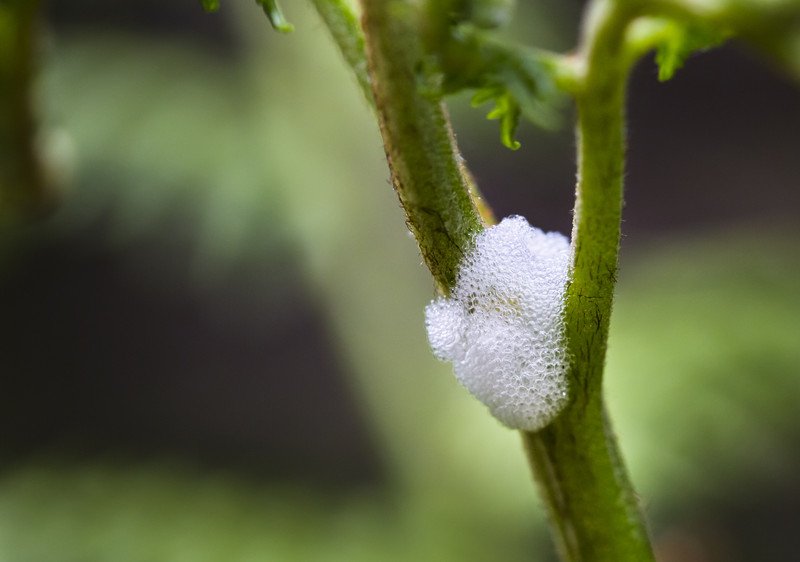Spittlebugs are the nymphs of insects called froghoppers.
Adult froghoppers are small oval- to triangular-shaped insects ¼ to ½ inch in length. The adults can be green, tan, brown, or black. They can jump as much as 100 times their height, giving them the name froghoppers. They can also fly. Many species of froghopper resemble leafhoppers.
Good Products for Pest and Disease Control at Amazon:
- Garden Safe Snail and Slug Bait
- Bonide Sulfur Fungicide
- Monterey BT Caterpillar Killer
- Neem Bliss 100-% Cold Pressed Neem Oil
- Safer Brand Insect Killing Soap
- PyGanic Botanical Insecticide
Nymphs are yellow to yellowish-green and look much like the adults but are wingless. Nymphs are immobile early in life. They suck sap from plants to grow into adults and surround themselves in a protective mass of foam or “spittle.” The feeding of spittlebug nymphs causes little damage to plants.

In spring the spittlebug nymphs hatch from overwintered eggs and begin feeding. The nymphs reach maturity in two to six weeks. Adults feed over the summer and lay eggs in the fall. Eggs are white to beige and laid in rows between the leaves and main stems of plants.
There is commonly one generation of spittlebugs each year.
Spittlebugs are found throughout North America.
Scientific name: Superfamily Cercopoidea
Target plants
Froghoppers and spittlebugs feed on corn, herbs, and some vegetables and fruits. They also feed on annual and perennial flowering plants.
Feeding habits and damage
Nymphs and adults suck plant sap but they do little if any damage.
Organic controls
The foam that surrounds feeding spittlebugs may be unsightly but it requires no control. Wash nymphs and adults off plants with a strong stream of water from the garden hose.
Related articles:
Vegetable Garden Organic Pest Control
Vegetable Garden Diseases Problem Solver
Vegetable Garden Organic Weed Control
Garden Planning Books at Amazon:
- Vegetable Garden Almanac & Planner
- Kitchen Garden Grower’s Guide Vegetable Encyclopedia
- Vegetable Garden Grower’s Guide
- Tomato Grower’s Answer Book















